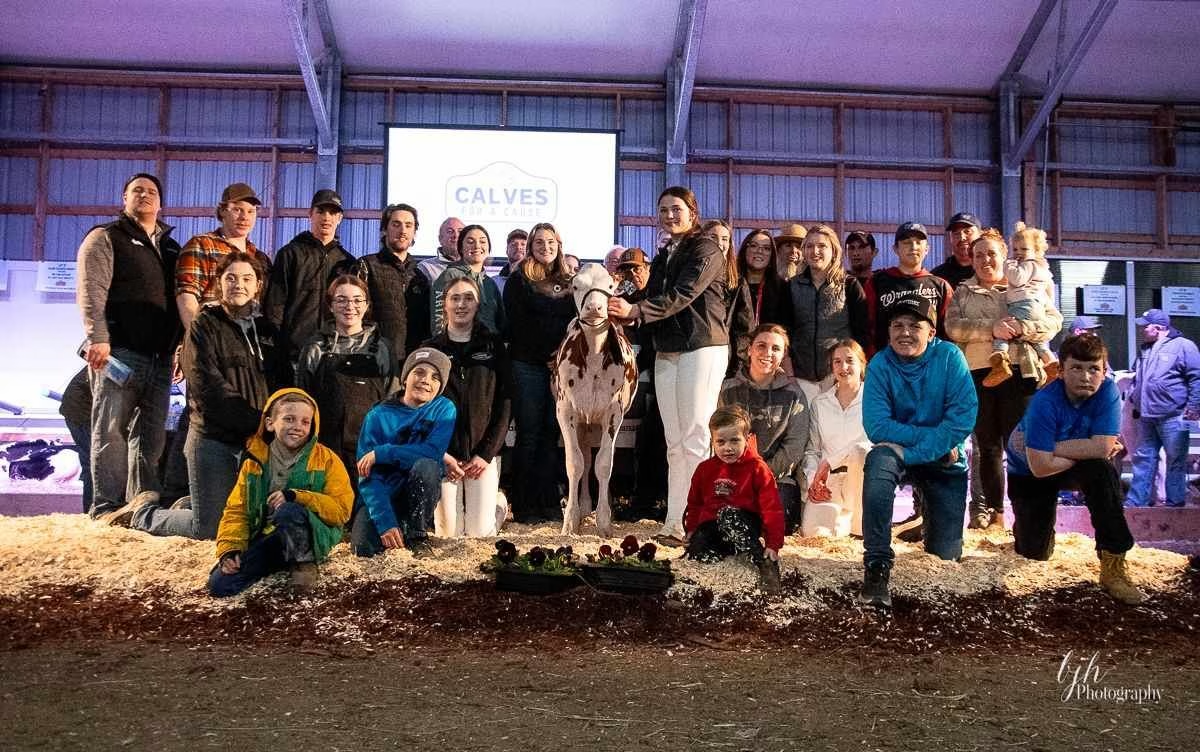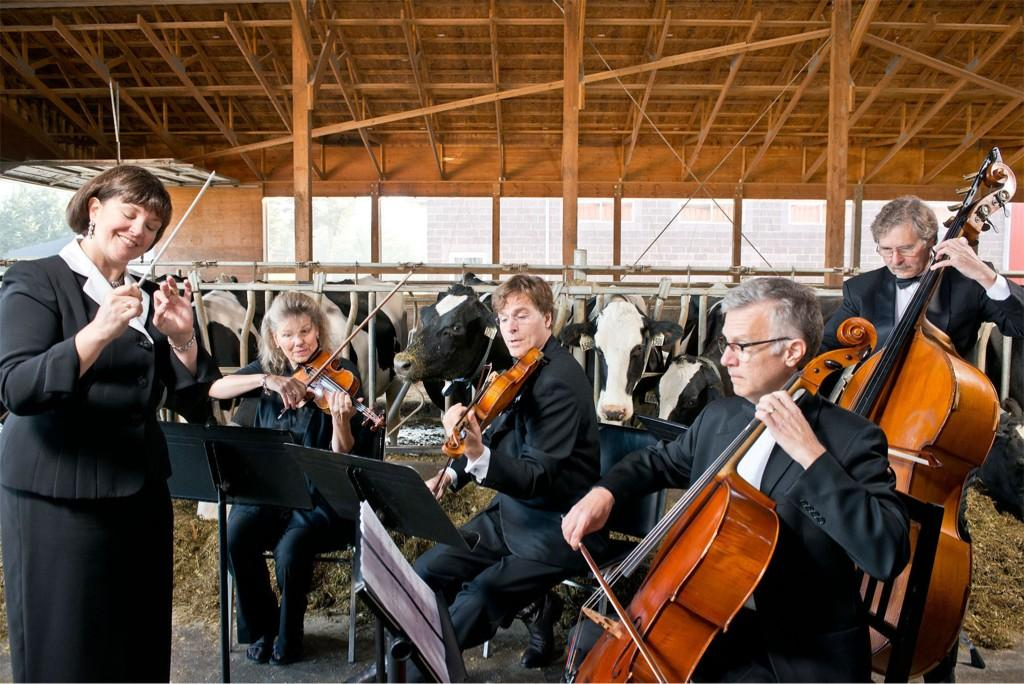When Passion for Cattle Meets Heartfelt Purpose

The gavel fell at a breathtaking $20,500 for Hodglynn Alpha Mapleton, sending a wave of excitement through the packed Cow Coliseum. As the red Holstein beauty—maternal sister to 2022’s Royal Winter Fair Supreme Champion—now owner by breeders in the Netherlands, something more profound than a mere cattle transaction had occurred. This wasn’t just another high-dollar sale but the emotional pinnacle of the 2025 Calves for a Cause auction. Canada’s dairy elite once again proved that their passion for exceptional genetics is matched only by their generosity of spirit.
Three hours after the Canadian Dairy XPO’s leading trade show had closed on April 2nd, hundreds still crowded the auction ring in Stratford, Ontario. The energy was palpable as bidders jostled for position, phones were held high for remote participants, and animated discussions filled every corner of the venue. This fifth-annual charity auction has channeled over $170,000 to the Children’s Health Foundation since its 2021 inception—a testament to the dairy community’s extraordinary commitment to giving back.
The Heart Behind the Cause: Brooks’ Journey

Behind every bid and every dollar raised stands a deeply personal story that brings meaning to this remarkable event. Brooks Markus, son of dairy producers Darryl and Sarah, was born with Congenital Central Hypoventilation Syndrome (CCHS). This rare genetic disorder robbed him of the ability to breathe automatically, particularly during sleep. Known as “Ondine’s Curse,” this condition meant Brooks spent the first 120 days of his young life fighting for every breath in the critical care unit at London’s Children’s Hospital.
Those four months forever changed the Markus family. The endless hours beside hospital monitors, the dedicated medical staff who became like family, and the specialized equipment that kept their son alive sparked a profound desire to give back. For Darryl, who grew up immersed in the dairy farming culture, the answer was clear: harness the community’s love for exceptional cattle to support the hospital that saved their son’s life.
In perhaps the most touching moment of the 2025 auction, Brooks led Lot 33—Liberty Gen Chocolate Mousse—into the sales ring. The crowd fell momentarily silent before erupting in supportive applause. This wasn’t just a child showing a calf; this was the living embodiment of why everyone had gathered. Brooks’ presence transformed abstract philanthropy into visceral purpose, connecting every person in that room to the children who would benefit from their generosity.

From Kitchen Table Dream to International Phenomenon
What began as a pandemic-era online fundraiser has blossomed into a global genetic marketplace with heart. The evolution has been remarkable:
The inaugural 2021 online sale donated an impressive $71,000. By 2022, the cumulative total reached $106,000. The 2023 auction shattered records with $285,000 in gross sales, allowing for a $65,000 donation to London’s Children’s Hospital and an additional $6,500 to Stratford General Hospital. Last year’s event continued the momentum, raising nearly $75,000 for pediatric care.
The 2025 offering showcased 40 elite calves, 26 embryos, numerous semen lots, and specialty items, including a striking LED Holstein head sign with a maple leaf backdrop. The quality was exceptional, with the average heifer commanding approximately $7,200—a significant jump from 2024’s $4,800 average.
Bidding opened with a bang as Martin-View Sweet Caroline commanded $11,000, setting the tone for an evening of generous competition. The atmosphere grew increasingly electric as the night progressed, with bidders from across Ontario, Canada, and the world vying for genetic treasures. After about an hour of intense bidding, pizza arrived to fuel the crowd through the remainder of the auction—a humble reminder of this event’s community spirit.

Beyond Fundraising: Building a Legacy of Compassion
The Children’s Health Foundation in London, Ontario, receives 100% of the commission generated from these sales. These funds directly support specialized pediatric programs and services at the Children’s Hospital, part of the London Health Sciences Centre. For families facing the terrifying reality of a child’s serious illness, these resources become a lifeline of hope.
For the Markus family, this initiative represents far more than gratitude for Brooks’ care—it’s about ensuring that every child who faces similar battles has access to the best possible treatment. As Darryl has emphasized, the core purpose is supporting programs that lead to positive outcomes for all children, recognizing that any family could unexpectedly find themselves needing these critical services.
The overwhelming support from the dairy community has been the backbone of this success. Farmers and breeders from across Canada and worldwide have opened their hearts, barns, and wallets to make a difference. Consignors generously decide what portion of their sales will be donated, often making significant sacrifices of valuable genetics to maximize the impact.

The Bullvine Bottom Line
As the final bids were placed and the last calves exited the ring that April evening, something profound had been accomplished. Beyond the impressive dollar figures and the exceptional genetics exchanged, Calves for a Cause had once again demonstrated the extraordinary character of the dairy community.
This isn’t merely feel-good philanthropy—it’s a powerful example of how specialized knowledge, resources, and passion can be channeled toward life-changing outcomes. When dairy farmers unite behind a cause, their impact extends far beyond the barn door, reaching into hospital rooms where children fight their toughest battles.
The final donation total for 2025 will be announced in the coming weeks. Still, the true measure of success was already evident in the faces of those who participated—especially in the smile of young Brooks Markus as he led his calf through the ring, a living testament to the difference this community continues to make, one exceptional heifer at a time.
Learn more:
- Brooks Markus: A Fountain of Hope and Inspiration Participates in the 4th Edition of Calves for a Cause
- Canadian Dairy XPO – A Record Year!
- Calves for a Cause Raises $75000 for Children’s Health Foundation of London
 Join the Revolution!
Join the Revolution!
Join over 30,000 successful dairy professionals who rely on Bullvine Daily for their competitive edge. Delivered directly to your inbox each week, our exclusive industry insights help you make smarter decisions while saving precious hours every week. Never miss critical updates on milk production trends, breakthrough technologies, and profit-boosting strategies that top producers are already implementing. Subscribe now to transform your dairy operation’s efficiency and profitability—your future success is just one click away.







 Join the Revolution!
Join the Revolution!



 Every dairy family builds their agricultural legacy over time. For Bram Prins it started in the Netherlands over forty years ago. “In 1968 our family decided to move to county Groningen. As the oldest of seven children I worked with my father to start farming 54 ha of arable land where we had 100 cows. “
Every dairy family builds their agricultural legacy over time. For Bram Prins it started in the Netherlands over forty years ago. “In 1968 our family decided to move to county Groningen. As the oldest of seven children I worked with my father to start farming 54 ha of arable land where we had 100 cows. “ 



 Advantages of Automatic Calf Feeders
Advantages of Automatic Calf Feeders


